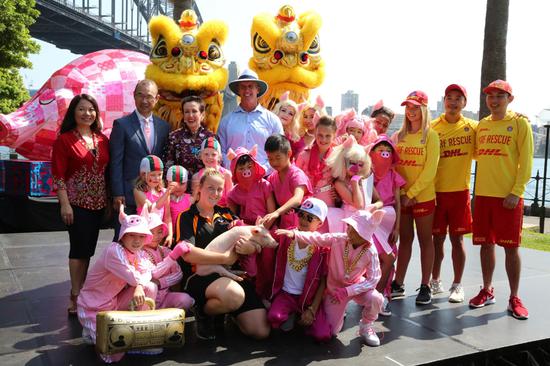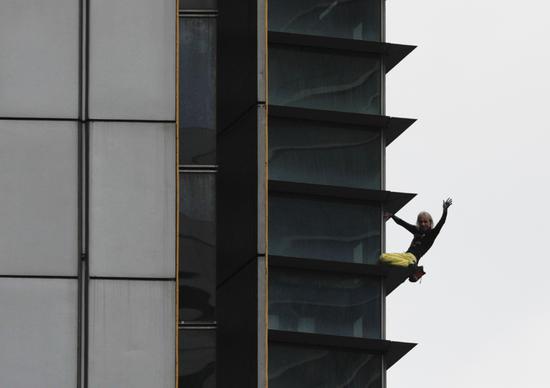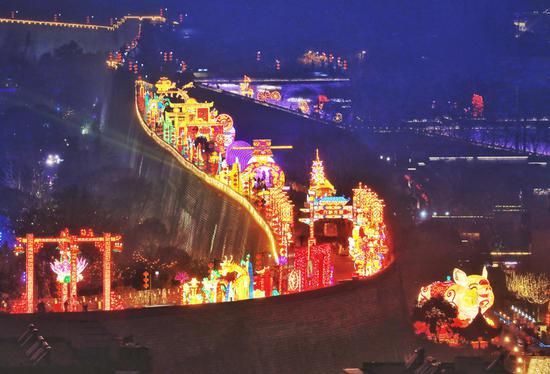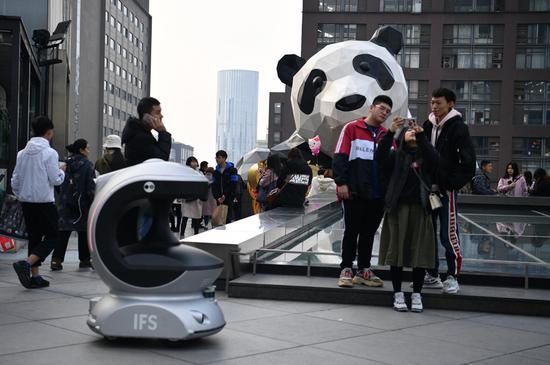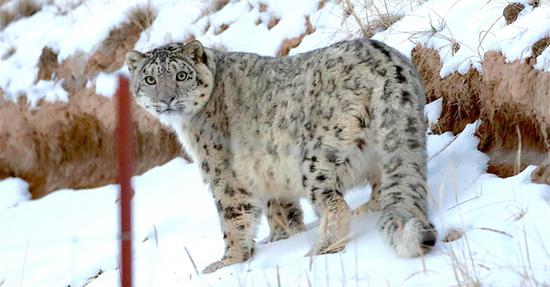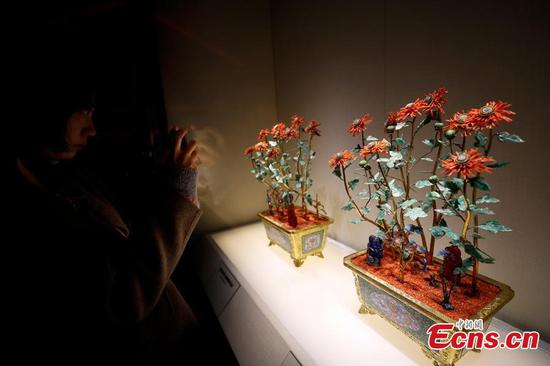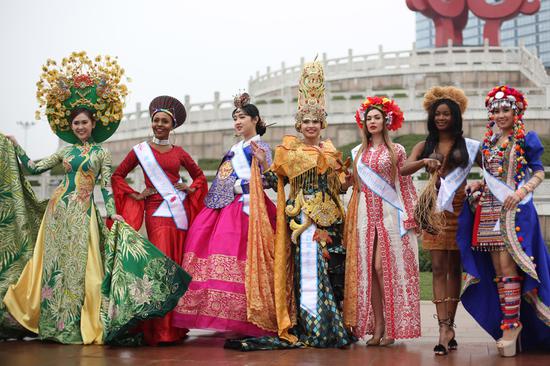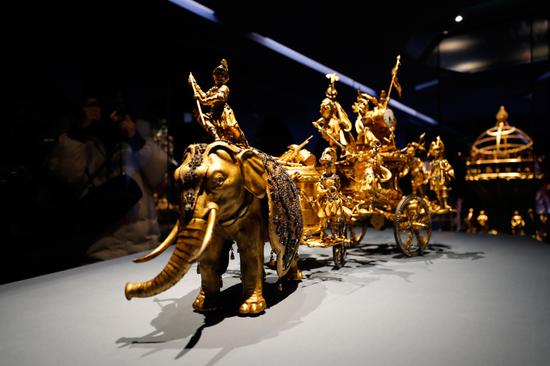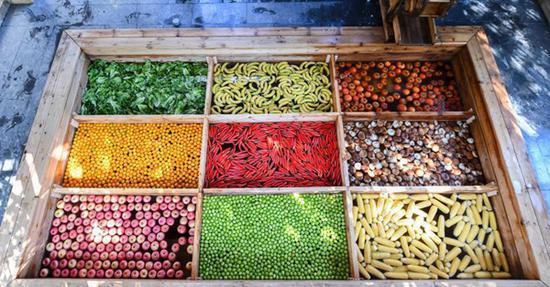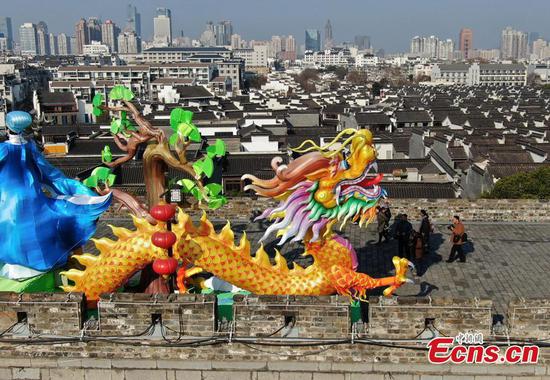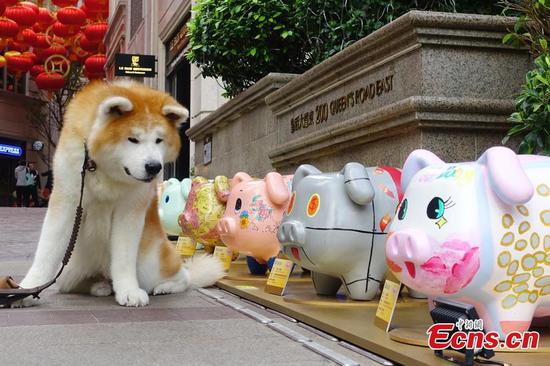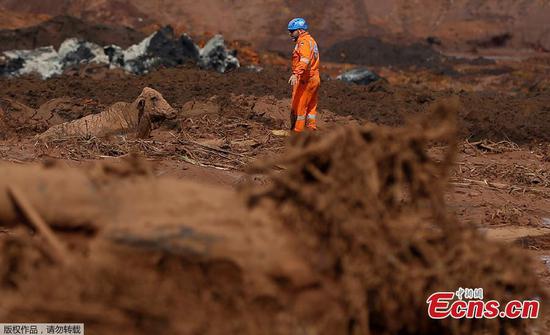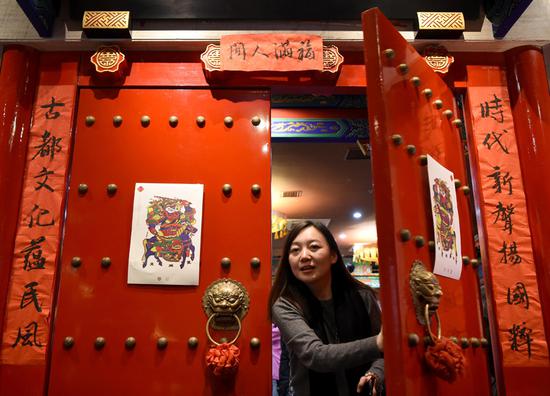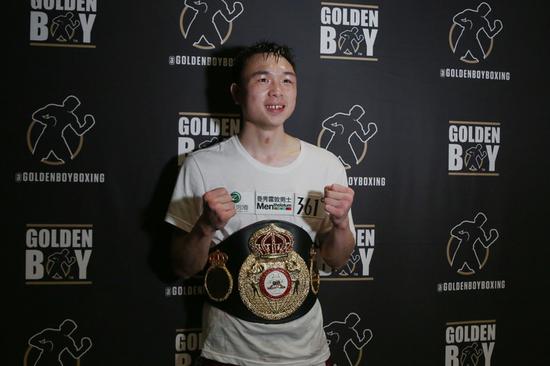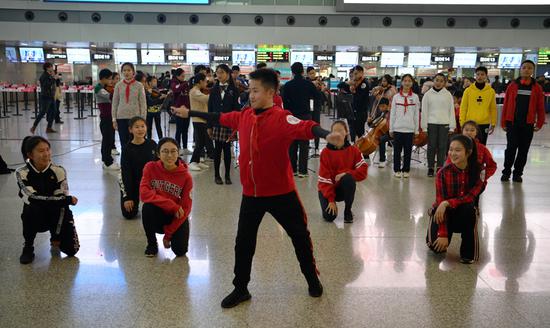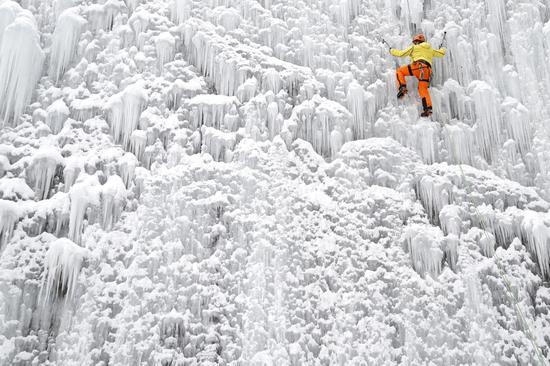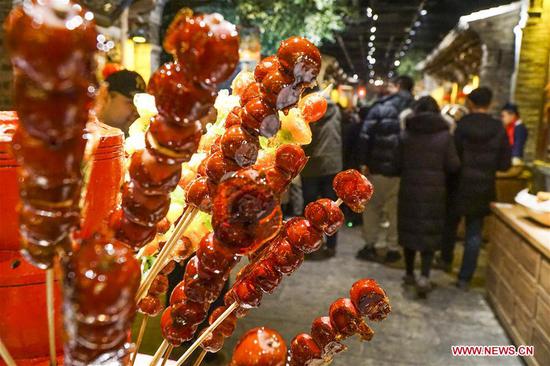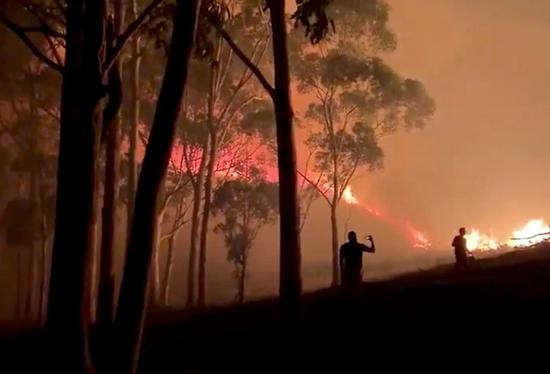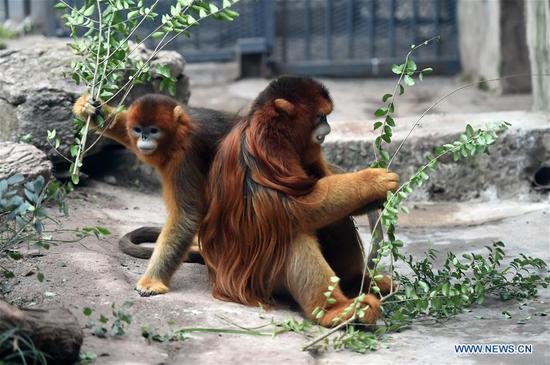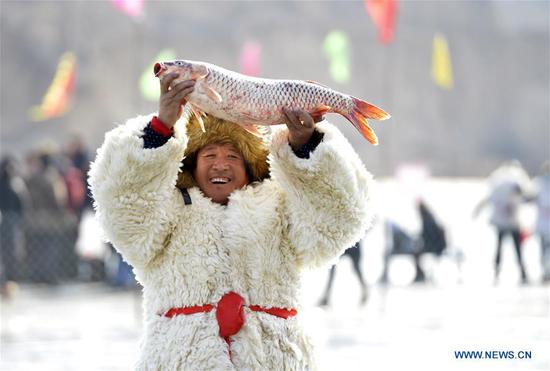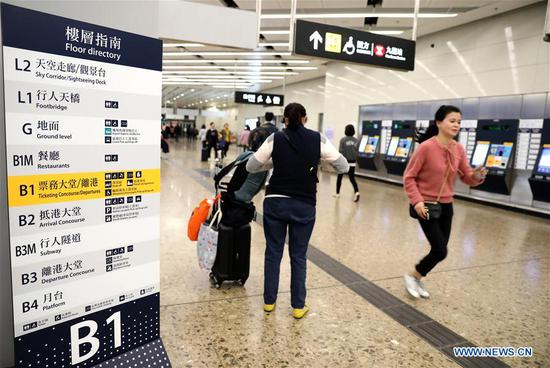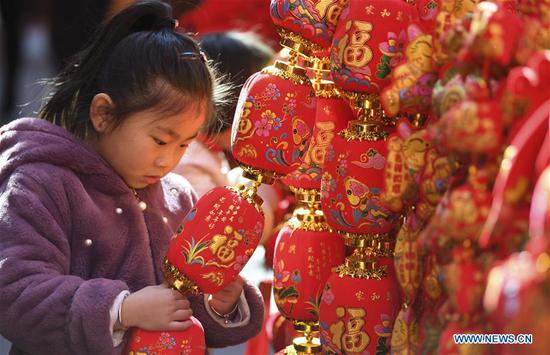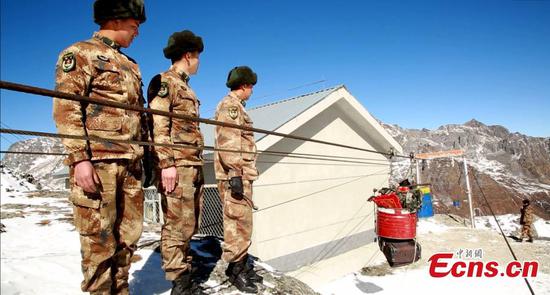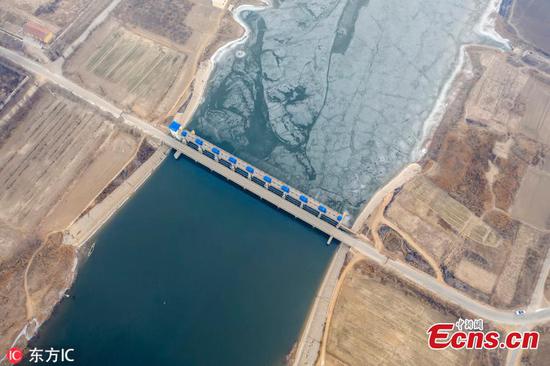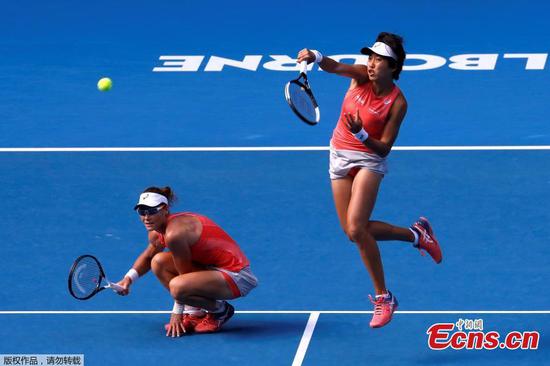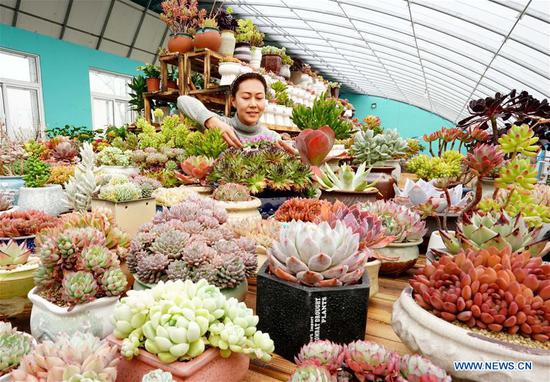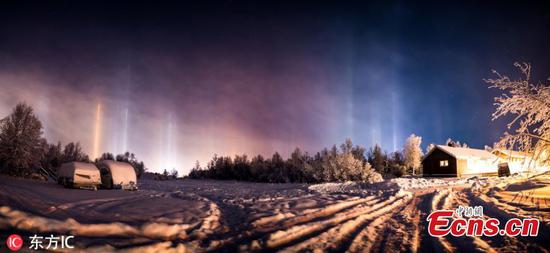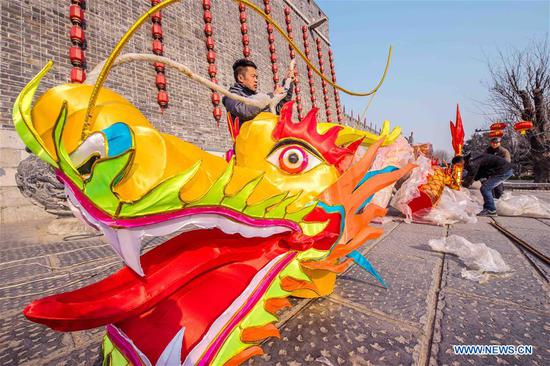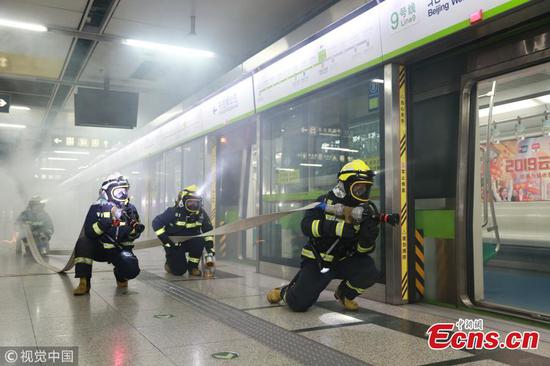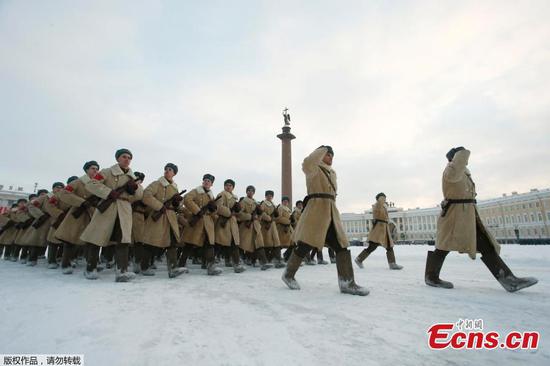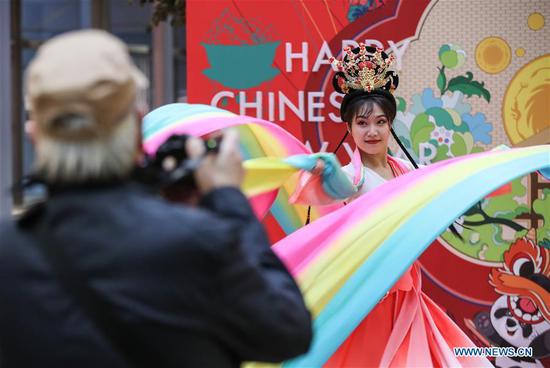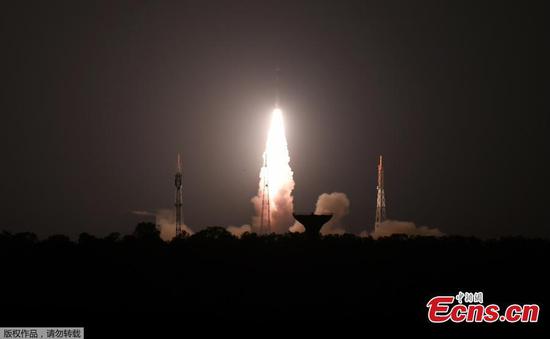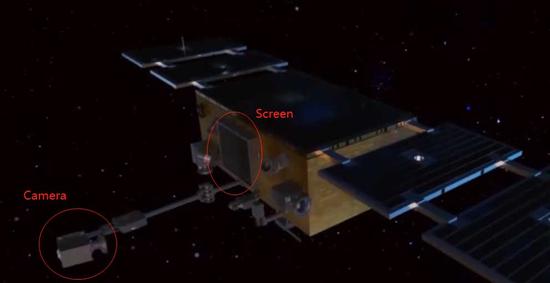
A render of the satellite. /Screenshot from CCTV
Imagine taking a selfie in the outer space. Chinese state media took 2019 “space selfies” with the help of a satellite during a web gala celebrating xiao nian, or “lesser Spring Festival.”
Photos were collected from the Internet and taken in the gala studio. They were copied to the engineers at the Chinese space program and beamed up to a “selfie satellite.”
The satellite was equipped with a screen to display the photos one by one and a camera to shoot the pictures with the Earth as the background.
Though it's arguable if they can still be defined as selfies, the show did surprise the audiences and singer Jane Zhang, who performed the Chinese-language version of Huawei's brand song “Dream It Possible” at the gala.
Jane got the privilege to take the first “space selfie.”
Human host vs. AI host
After the world's first AI news anchor made its debut at the World Internet Conference 2018 last November, another AI stood out to challenge the media people-a virtual gala host looked like CCTV host Benny Sa.

The "host," wearing a red-and-black stripped coat and with a microphone in his hand, flashed on the stage, greeting to its prototype Benny Sa. The AI host seems a bit taller and much more talkative than the real person.
The two hosts exchanged sarcasm on the gala stage, creating laughter among the audiences.
According to Zheng Yi, founder of US-based AI company ObEN, the technology behind is a 3D-scanner, which can create a model of people's appearance and body figure after analyzing the photo and video gallery of the prototype.
Meanwhile, the AI host was developed via machine learning to simulate the voice, facial movements, and gesture of a real-life man. The technology can train itself to create a much more life-like figure with more data input.









